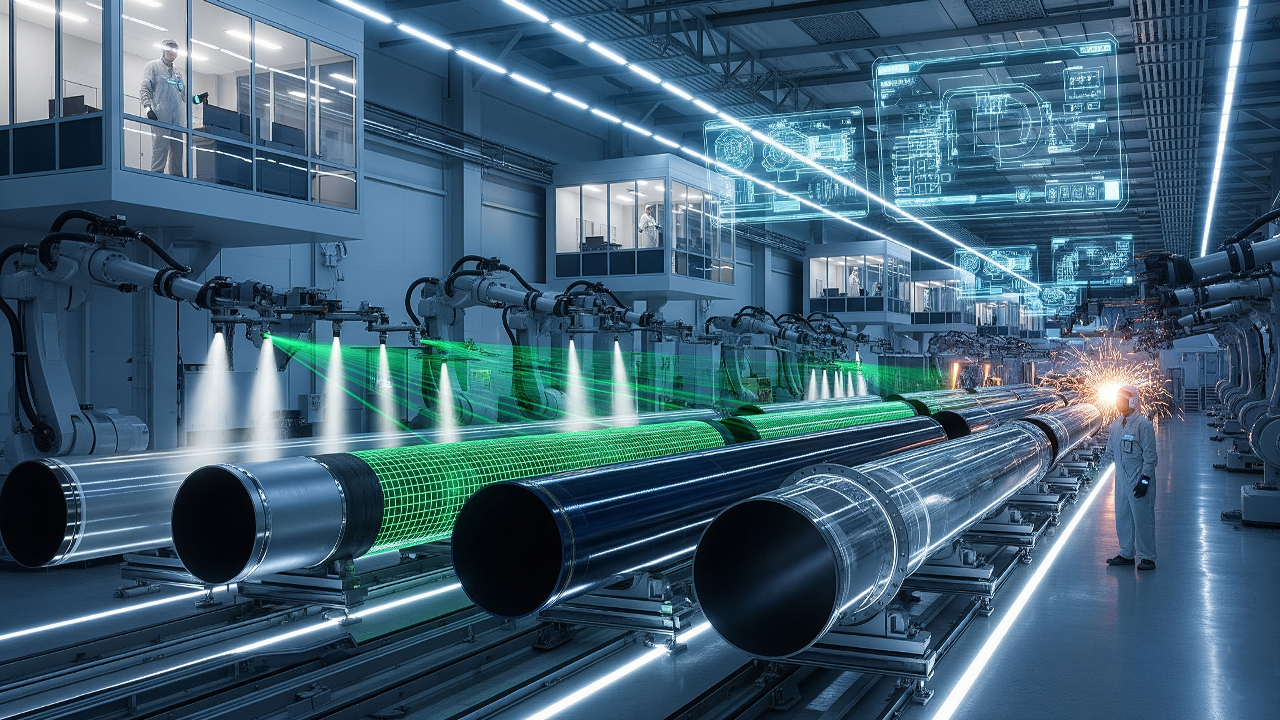

Pipelines are critical components of modern infrastructure. They aid in the transport of gas, oil, water, hydrogen, and chemicals across industries. However, they are prone to corrosion and breakdown unless they are produced without proper coatings. That is where pipe coating companies come into the picture, where coating makes these pipes durable, efficient, and safe for use. As the industries turn their focus towards clean energy, smarter infrastructure, and sustainable operations, the importance of coating is growing larger than ever. The future of such pipe coating companies lies in their capability to meet the dynamic trends and address the emerging problems, and generate opportunities for themselves.
Pipelines carry various chemicals, gases, oils and water and hence are quintessential in the current modern world. However, it should be noted that they are subjected to harsh conditions on a daily basis, including abrasive chemicals, high temperatures, daily wear and tear, and other external factors. These pipes require some sort of coatings that render them safe, to ensure smooth transportation, efficient workflow, and compliance with the required regulatory standards.
They not only stop corrosion but also increase the service span of the pipes and operational efficiency by decreasing friction and enhancing flow. Environmental compliance is also supported by modern coating, which helps companies reduce leakages, spills and emissions.
In brief, proper pipe coating leads to safety, reliability, cost-effectiveness, and sustainability, which is more important than ever in the contemporary industrial environment.
Energy Transition-Ready Coatings : Pipelines transporting hydrogen, CO₂, or biofuels need sophisticated coating solutions alongside permeation resistance, crack prevention, and chemical resistance. To meet these new demands, industries must work to create and provide such high-end solutions.
Enhanced Materials & Multi-Functional Coatings. : FBE, 3LPE, and 3LPP are new materials that are known to offer durability and adhesion. Many companies manufacture coatings that provide corrosion protection, abrasion resistance, as well as thermal insulation for subsea and offshore pipelines.
Digitalization & Smart QA/QC : IoT sensors and digital twins can be used to monitor thickness, cure and holidays in real time. AI-based predictive maintenance can detect failures at the earliest, which helps save cost and time.
Robotics & Automation : Robotic blasting, spraying, and automated joint coating are used to provide uniform quality, quicker application, and secure work conditions to workers in order to minimize errors and rework.
Sustainability and ESG Compliance. : The use of low-VOC, waterborne, and bio-based coatings upgrades environmental performance. Regulatory compliance and tender selection are increasingly demanding lifecycle transparency and EPDs.
Hydrogen-Ready Pipelines : PThe worldwide transition to hydrogen as a clean energy source is creating a need to have pipelines capable of transferring hydrogen gas safely. Fabrics with permeation protection, crack elimination, and field joint compatibility will become popular. Businesses with validated hydrogen-ready systems get a first-mover advantage.
Carbon Capture Fuel (CCF) Pipelines. : CCUS infrastructure is growing as industries look to minimize carbon emissions. Acid-resistant and chemically stable coatings are required on CO2 pipelines. Coating firms that provide quality high-performance products are going to experience huge growth opportunities in the coming years.
Water and Wastewater Infrastructure. : The opportunities to refurbish and protect water networks are offered by aging municipal pipelines and the necessity for water conservation. Certified anti-corrosive and anti-microbial paints with quick drying time are also in demand.
Offshore Wind and Subsea Projects. The offshore energy industry, such as wind farms and subsea pipelines, requires coatings that are able to resist splash-zone environments, abrasion, and fouling. Companies can provide advanced solutions to small and large-scale projects and capitalise on the market.
Flow Efficiency and Internal Pipeline Coatings. : The use of internal coatings helps in the reduction of friction and enhances flow efficiency, which enables operators to maximize throughput without the need for new pipelines. This is a chance to offer coatings as a value-added solution instead of a mere protective cover.
In brief, energy transition, sustainability, and technology are pushing the pipe coating industry into a new era. Although there are obstacles such as increased expenses and tougher regulations, there are also ample business venture possibilities in hydrogen, CCUS, water infrastructure, and intelligent solutions. Firms that use advanced technology, quality materials, automation, and green coatings will be at the forefront of constructing safer and environmentally-friendly pipelines in the future.